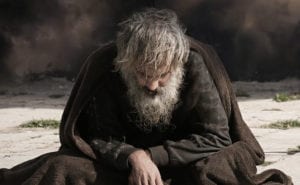In the lead up to his death Jesus is well aware of what is to occur.
In the 24 hours prior to his crucifixion, just before the Passover feast, Jesus does something odd.
He washes his disciples feet.
I’m not sure about you, but I don’t find feet particularly attractive. For some people they might be. But in general, for most of us I imagine, we don’t find feet attractive. Through a combination of use, the environment ones feet are in (not to mention hereditary traits), feet have a distinctly unattractive quality to them.
Feet go through a lot too. Depending on the environment you find yourself in will depend on how well your feet perform. Today, comfortable shoes and socks allow for supple feet with little wear and tear. Some go to extremes of using moisturiser and other creams to help maintain their feet. In hotter climates, there may not be the need for shoes, so bare feet or thongs (known as flip-flops or jandals in other parts of the world) become the footwear of choice.
In the first-century, people often wore thin leather sandals with laces that tied up over the ankle and up the lower legs. That arrangement left plenty of room for the feet to get dirty. Consider the roads: they weren’t asphalt or concrete; they were dirt roads and paths. With people, carts, horses, and donkeys travelling along them. The chance of walking in something squelchy was high. Feet would be forever caked in dirt and poo.
In the first-century, people often wore thin leather sandals with laces that tied up over the ankle and up the lower legs. That arrangement left plenty of room for the feet to get dirty. The chance of walking in something squelchy was high.
It’s not a pretty thought.
Yet here is Jesus: about to have his final meal with his disciples before he is arrested, beaten, and killed; knowing the betrayal that comes from one of his own, and that the rest will desert him. At this moment, Jesus takes a towel and a bowl of water and washes these dirty feet.
This is not simply a symbol. This is a very real act of humility and service. Jesus cleans off the dirt and poo; the dust and mud that cakes the disciples feet, making them clean once again.
Act and Meaning
The teaching moment for Jesus comes after he performs this washing. He explains to his disciples that the reason he does this is to be an example of service. They are to understand this for themselves, serving and loving one-another in similar ways.
Jesus puts it this way,
When Jesus had washed their feet and put on his outer clothing, he reclined again and said to them, “Do you know what I have done for you? You call me Teacher and Lord—and you are speaking rightly, since that is what I am. So if I, your Lord and Teacher, have washed your feet, you also ought to wash one another’s feet. For I have given you an example, that you also should do just as I have done for you. “Truly I tell you, a servant is not greater than his master, and a messenger is not greater than the one who sent him. If you know these things, you are blessed if you do them. (John 13:12-17)
As we head into the Easter weekend may we recognise the service Jesus has done for us.
Through his death on the cross Jesus has not just given us a symbol of humility and service but has acted in humility and service toward us. Jesus’ death provides us with the cleanliness we need. His death is the sacrificial service for our sin. It is an act that cleanses us. As Jesus washes his disciples feet, making them clean; so too Jesus’ death washes our hearts and makes us clean from sin.
As we solemnly remember the death of Jesus these next hours, as we enter into the remembrance of our Lord’s death, may we come to a new appreciation of this great act of humility and service, for us, for our neighbour, and for our world.
And boy, don’t we need it.















